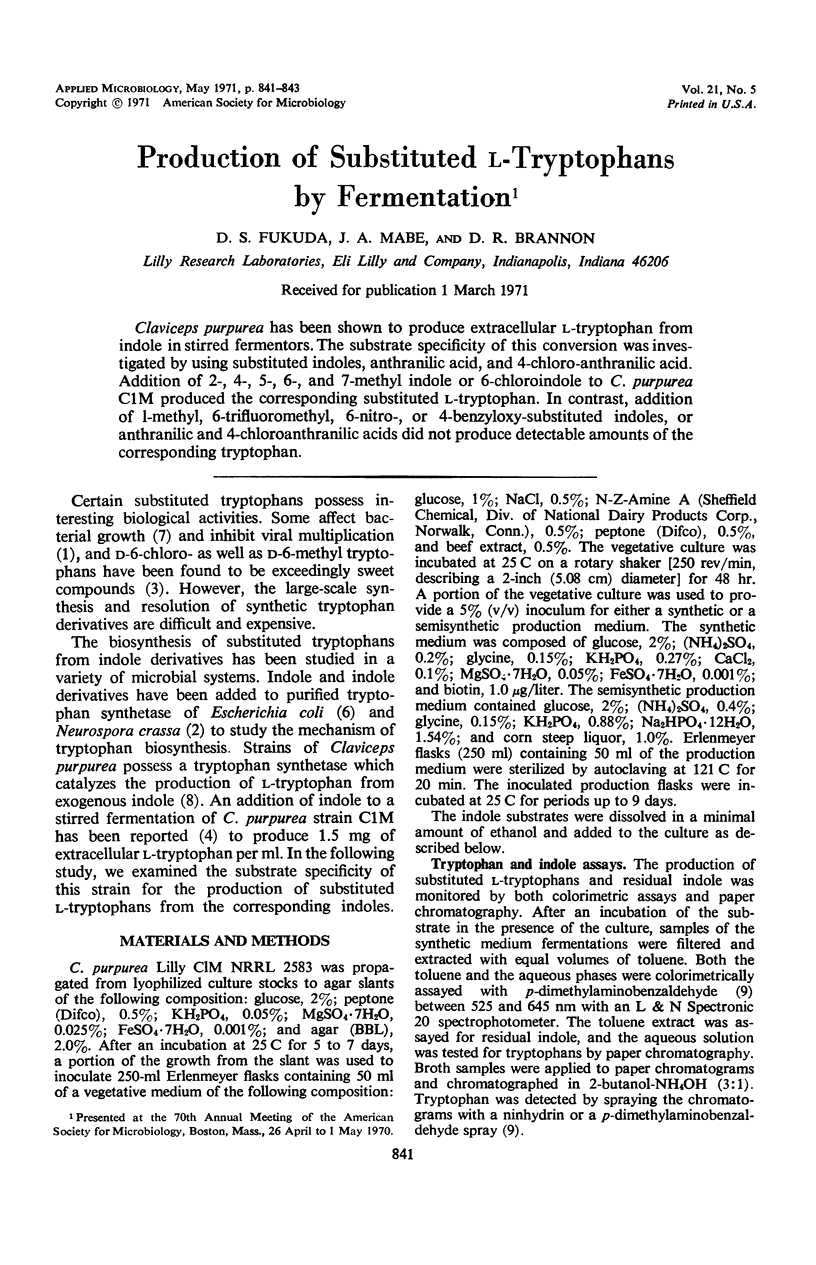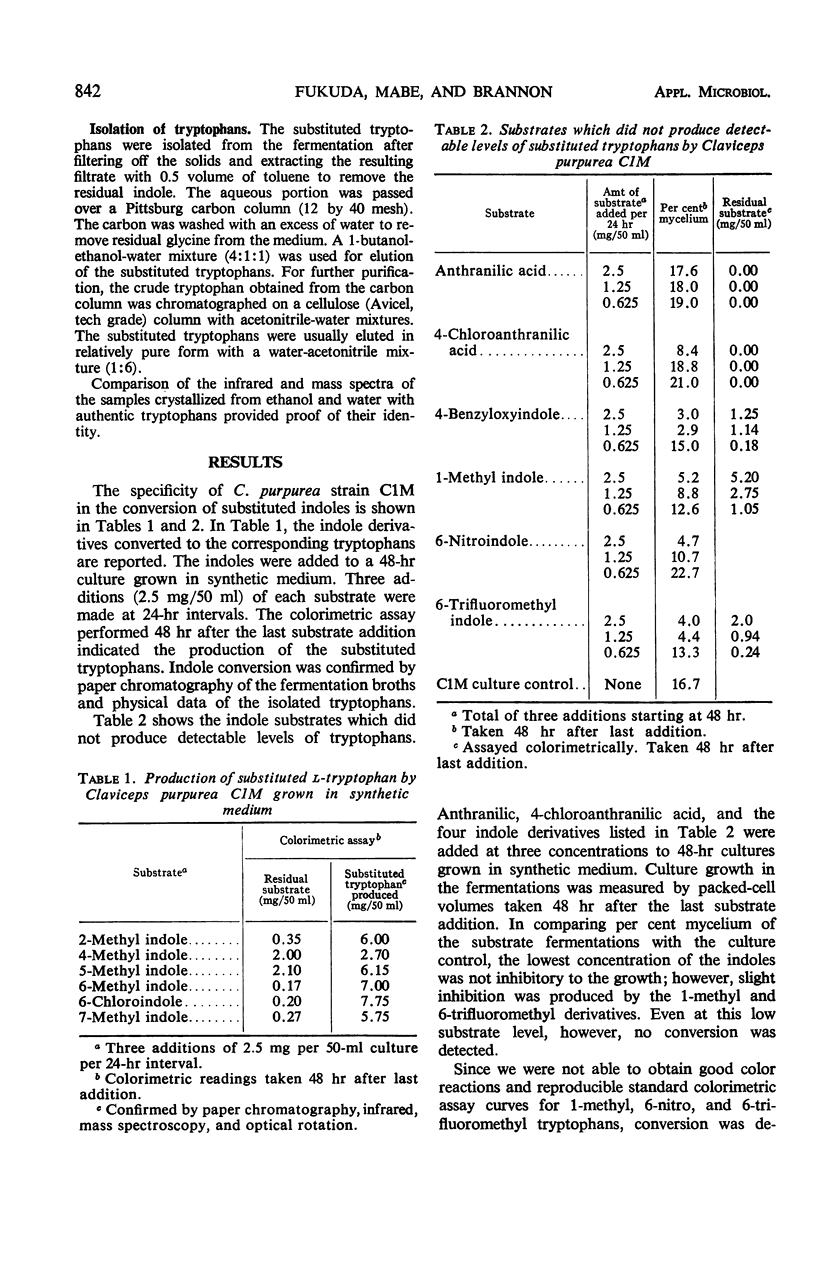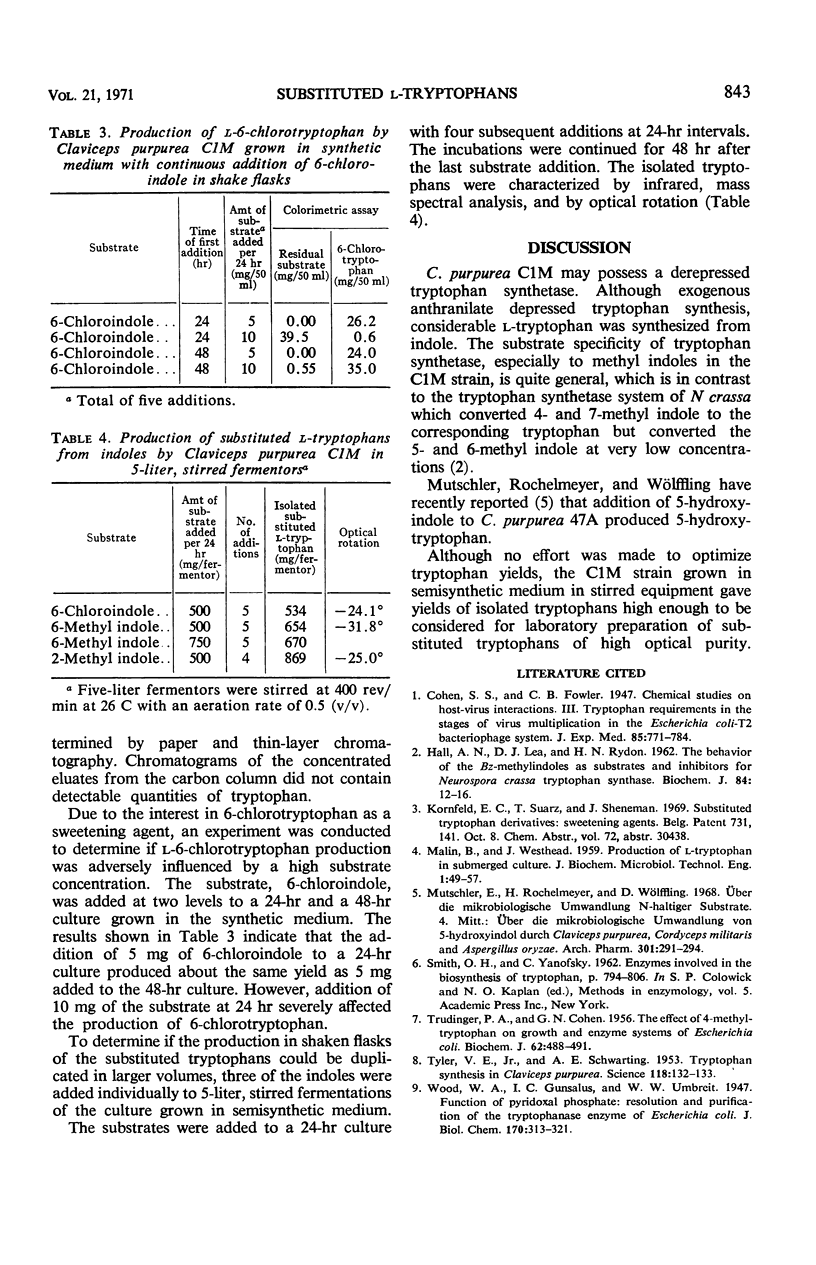Abstract
Claviceps purpurea has been shown to produce extracellular l-tryptophan from indole in stirred fermentors. The substrate specificity of this conversion was investigated by using substituted indoles, anthranilic acid, and 4-chloro-anthranilic acid. Addition of 2-, 4-, 5-, 6-, and 7-methyl indole or 6-chloroindole to C. purpurea C1M produced the corresponding substituted l-tryptophan. In contrast, addition of l-methyl, 6-trifluoromethyl, 6-nitro-, or 4-benzyloxy-substituted indoles, or anthranilic and 4-chloroanthranilic acids did not produce detectable amounts of the corresponding tryptophan.
Full text
PDF


Selected References
These references are in PubMed. This may not be the complete list of references from this article.
- HALL A. N., LEA D. J., RYDON H. N. The behaviour of the Bzmethylindoles as substrates and inhibitors for Neurospora crassa tryptophan synthase. Biochem J. 1962 Jul;84:12–16. doi: 10.1042/bj0840012. [DOI] [PMC free article] [PubMed] [Google Scholar]
- Mutschler E., Rochelmeyer H., Wölffling D. Uber die mikrobiologische Umwandlung N-haltiger Substrate. 4. Uber die mikrobiologische Umwandlung von 5-Hydroxyindol durch Claviceps purpurea, Cordceps militaris und Aspergillis oryzae. Arch Pharm Ber Dtsch Pharm Ges. 1968 Apr;301(4):291–294. doi: 10.1002/ardp.19683010409. [DOI] [PubMed] [Google Scholar]
- TRUDINGER P. A., COHEN G. N. The effect of 4-methyltryptophan on growth and enzyme systems of Escherichia coli. Biochem J. 1956 Mar;62(3):488–491. doi: 10.1042/bj0620488. [DOI] [PMC free article] [PubMed] [Google Scholar]
- TYLER V. E., Jr, SCHWARTING A. E. Tryptophan synthesis in Claviceps purpurea. Science. 1953 Jul 31;118(3057):132–133. doi: 10.1126/science.118.3057.132. [DOI] [PubMed] [Google Scholar]


